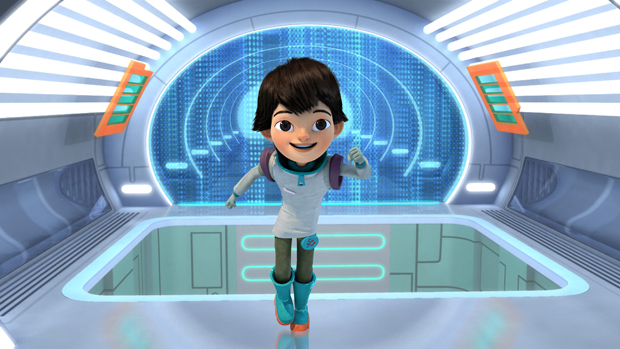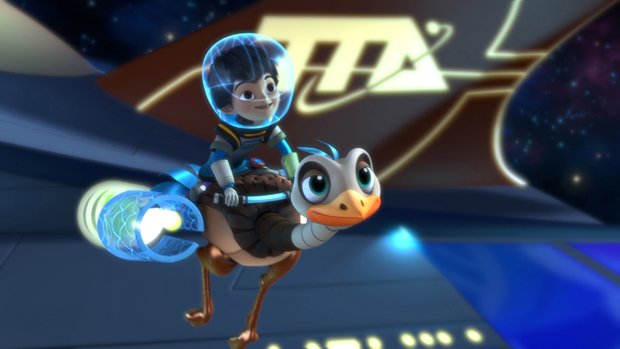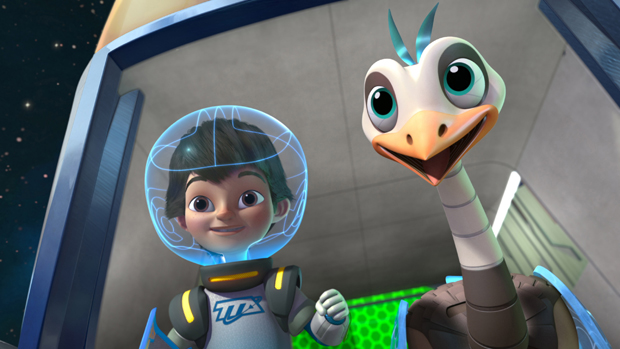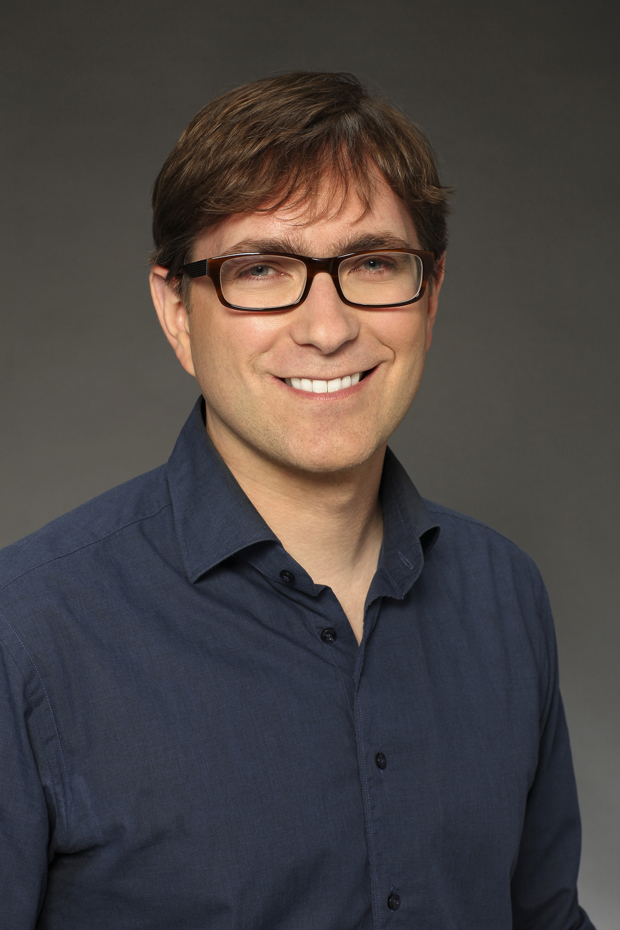Disney Junior’s new series, Miles from Tomorrowland, has a heartfelt and emotionally realistic take on life in outer space.
There’s nothing quite like real life to inspire creative endeavors — even ones as fantastic as Miles from Tomorrowland, a new Disney Junior animated series that debuted Feb. 6 from creator Sascha Paladino.
“The idea for Miles from Tomorrowland came when I first became a parent,” says Paladino. “Before then, I had a really exciting, fun life with my wife. We traveled a lot and went on a lot of adventures, and when I found out I was going to be a dad — not only that, but to twins — I kind of had this thought, ‘I’m never going to have another adventure again.’”
But Paladino then turned the thought around and wondered: “What’s the greatest adventure you could go on as a family?” His answer: Into outer space. That led to thoughts of a show about a family in outer space as told from a kid’s perspective — the very premise of Miles from Tomorrowland.
“That’s what felt different: the idea of being a kid in outer space and what it would mean to be with your family on this great adventure,” he said. “I pitched the idea when my boys were 3 months old, and — as a side note — the show will premiere when they’re 5 years old, which is pretty amazing and indicative of how it works.”
The pitch came at the right time: Disney was looking for a show about a family and kicked the show into development. And it was during that time that real life stepped in and offered some inspiration when Paladino moved with his family to Ireland to work on Disney’s Henry Hugglemonster series at Brown Bag Studios in Dublin.
“Moving to Europe would have been amazing, but moving to Europe with two little kids was off-the-charts amazing and made it that much more special,” says Paladino. “And that was just by chance, but it infused Miles with the sense that your adventures are even more special when your family is included.”
The final series, produced by Wild Canary in Burbank with animation by DQ Entertainment in India, follows the adventures of Miles Callisto, a boy who lives and works in outer space with his family. His parents — ship captain Phoebe and inventor Leo — work for the Tomorrowland Transit Authority and are charged with connecting the universe physically through transportation technology and socially through engaging with alien life forms and cultures. The crew also includes Miles’ sister, tech-savvy computer coder Loretta, and Merc, a mechanical ostrich who is Miles’ best friend.
With 60 11-minute episodes in the first season, the canvas gave Paladino and his crew a lot of room to explore the themes of adventure, family and exploring different cultures into the show’s shiny sci-fi package.
Miles’ relationships also are very important. Miles and Merc have a boy-and-his-dog bond, while Merc being a robot and a protector allows Miles to get into more perilous situations. Loretta also plays a key role as the brains to Miles’ brawn. The production worked with Google on the coding element of Loretta’s character. “It inspired me to write an episode in which Loretta writes computer code that helps her find a new planet,” says Paladino.
The show also has a NASA consultant who gives feedback on the scripts. “It’s always a balance of science versus focus on the storytelling,” Paladino says.
With Tomorrowland being a classic concept in the Disney oeuvre, stretching all the way back to the original conception of Disneyland, Paladino says he drew on the original inspiration and a modern take on it rather than any retro expression of it.
“In terms of the overall look, we wanted it to be really shiny and gleaming,” he says. “We were so inspired by going to SpaceX and NASA, because we saw what the future looks like.”
That led to concepts like “hard light” and an overall streamlined and modern design for the show and its depiction of technology. “We felt like there should be a really clean look to outer space, and I’ve been really happy with how that’s come out. It’s definitely been a process of trial and error; making things both useful and, hopefully, esthetically pleasing.”
But in the end, Paladino says it’s heart that powers the show.
“I think the biggest surprise is how hard it was to balance the action sequences, really exciting action sequences, with a really heart- felt family story,” says Paladino.














